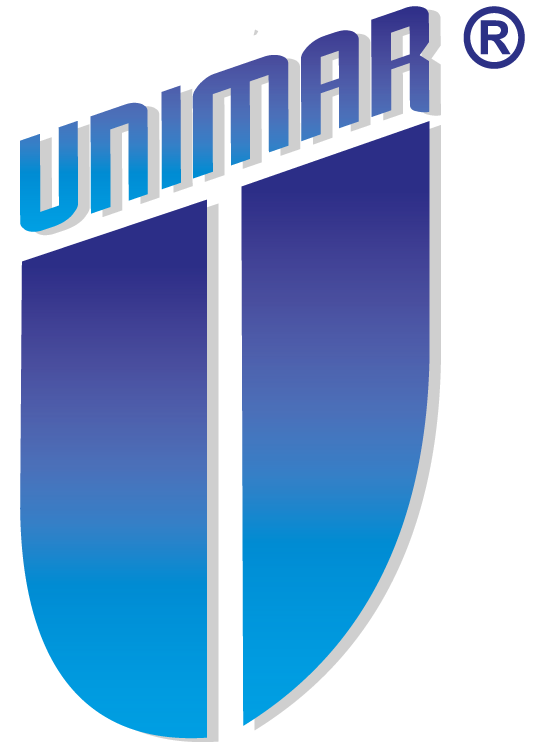Stored Product Pests
Stored product pests are usually brought into the home in an infested package of food. Initially, infestations are easy to overlook because the insects involved are quite small, especially in the egg and larval stages. Often the first indication of the infestation is the appearance of small moths flying about or the presence of beetles in or and life cycle.
The most common insects infesting food in the home are in the insect orders moths or beetles.
Adult moths and adult beetles are easy to distinguish from each other, but their larvae are a little more difficult to identify. Beetle larvae are either grublike and legless or have only three pairs of legs, all located close to the head. Moth larvae have three pairs of true legs, plus additional leglike structures further down the abdomen. Both larvae and adults of beetles feed on foodstuffs, whereas only the larval stage of moths consumes stored products.
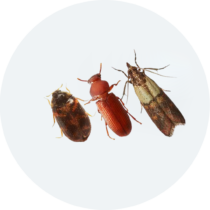
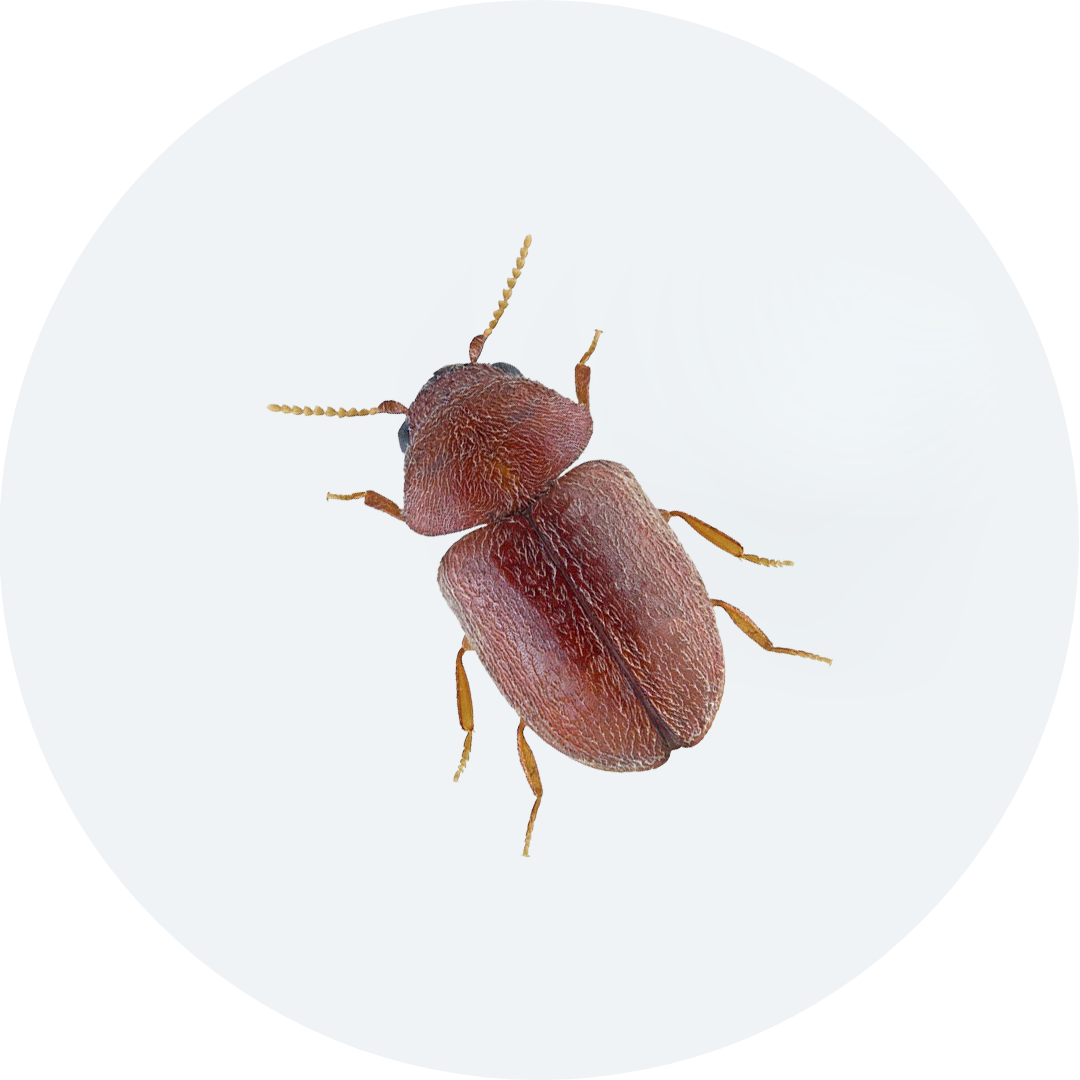
Characteristics: Adults are brown Oval-shaped; head bent downward sharply (humpbacked appearance); wing covers are smooth with antennal segments uniform and saw-like.
Legs: 6
Antennae: Yes
Wings: Yes
Habitat: Adults are most active during late afternoon and on cloudy days. They are attracted to light. Cigarette beetles commonly infest dried tobacco and tobacco products. They also infest a host of dry food products and may damage the leaves and bindings of books when feeding on the paste or overstuffed furniture when invading the straw, hair, etc.
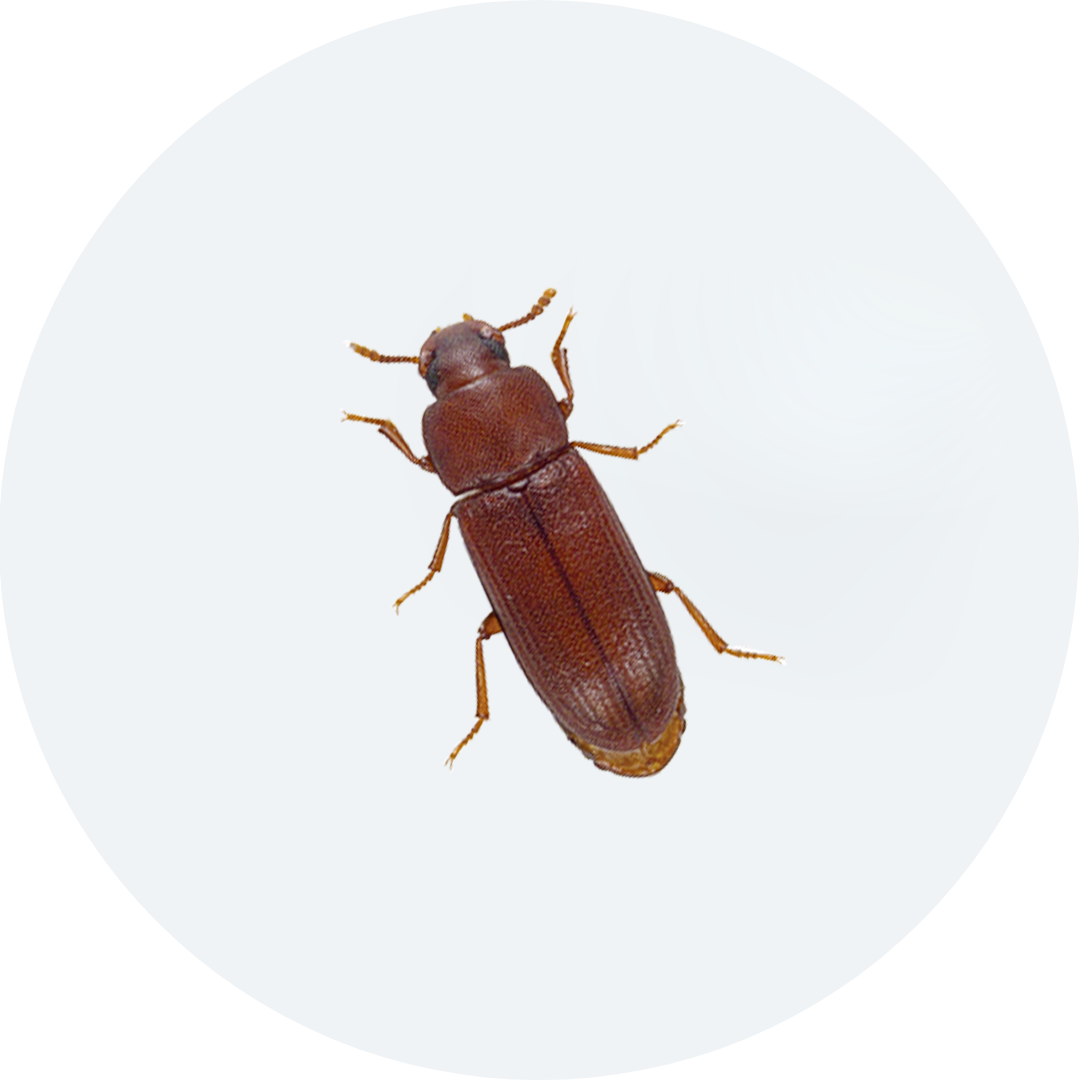
Characteristics: Adults are reddish brown. Antenna have an abrupt, three-segmented club.
Legs: 6
Antennae: Yes
Wings: Yes
Habitat: They are attracted to flour with high moisture content. Adults can fly and are attracted to light. Feed on Grain products, especially milled grain products like flour. damage the leaves and bindings of books when feeding on the paste or overstuffed furniture when invading the straw, hair, etc.
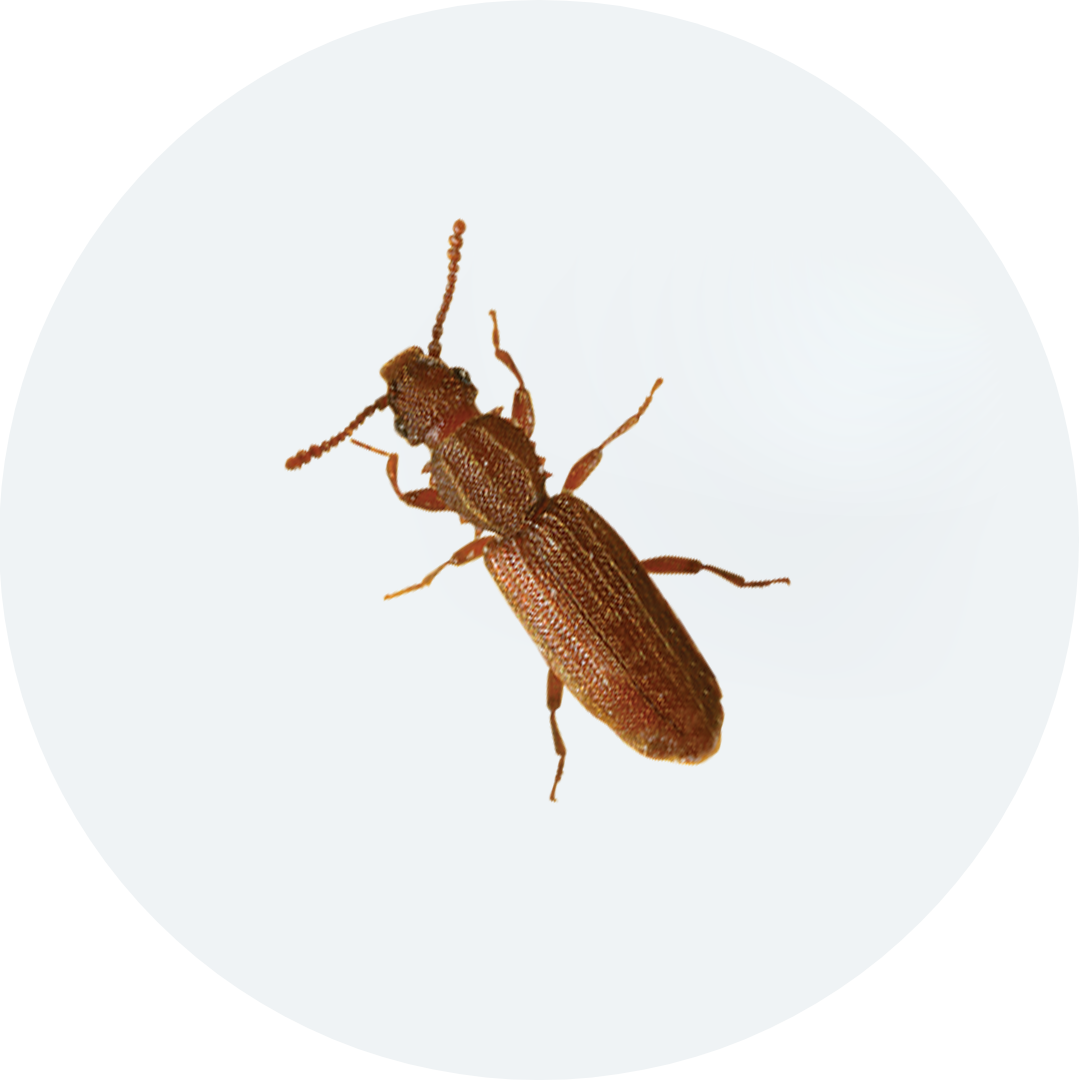
Characteristics: Teeth located on each side of prothorax; flattened body; well-developed wings, but cannot fly
Legs: 6
Antennae: Yes
Wings: Yes
Habitat: The sawtoothed grain beetle can squeeze through small cracks and crevices and contaminate food products. Feed on Food products containing some food oils such as grain products, pasta, candy bars, and mixes (e.g., pancake mix, cookie mix, etc.). Broken kernels are the preferred food, although they may feed on sound kernels.

Characteristics: Teeth located on each side of prothorax; flattened body; well-developed wings, but cannot fly
Legs: 6
Antennae: Yes
Wings: Yes
Habitat: The sawtoothed grain beetle can squeeze through small cracks and crevices and contaminate food products. Feed on Food products containing some food oils such as grain products, pasta, candy bars, and mixes (e.g., pancake mix, cookie mix, etc.). Broken kernels are the preferred food, although they may feed on sound kernels.
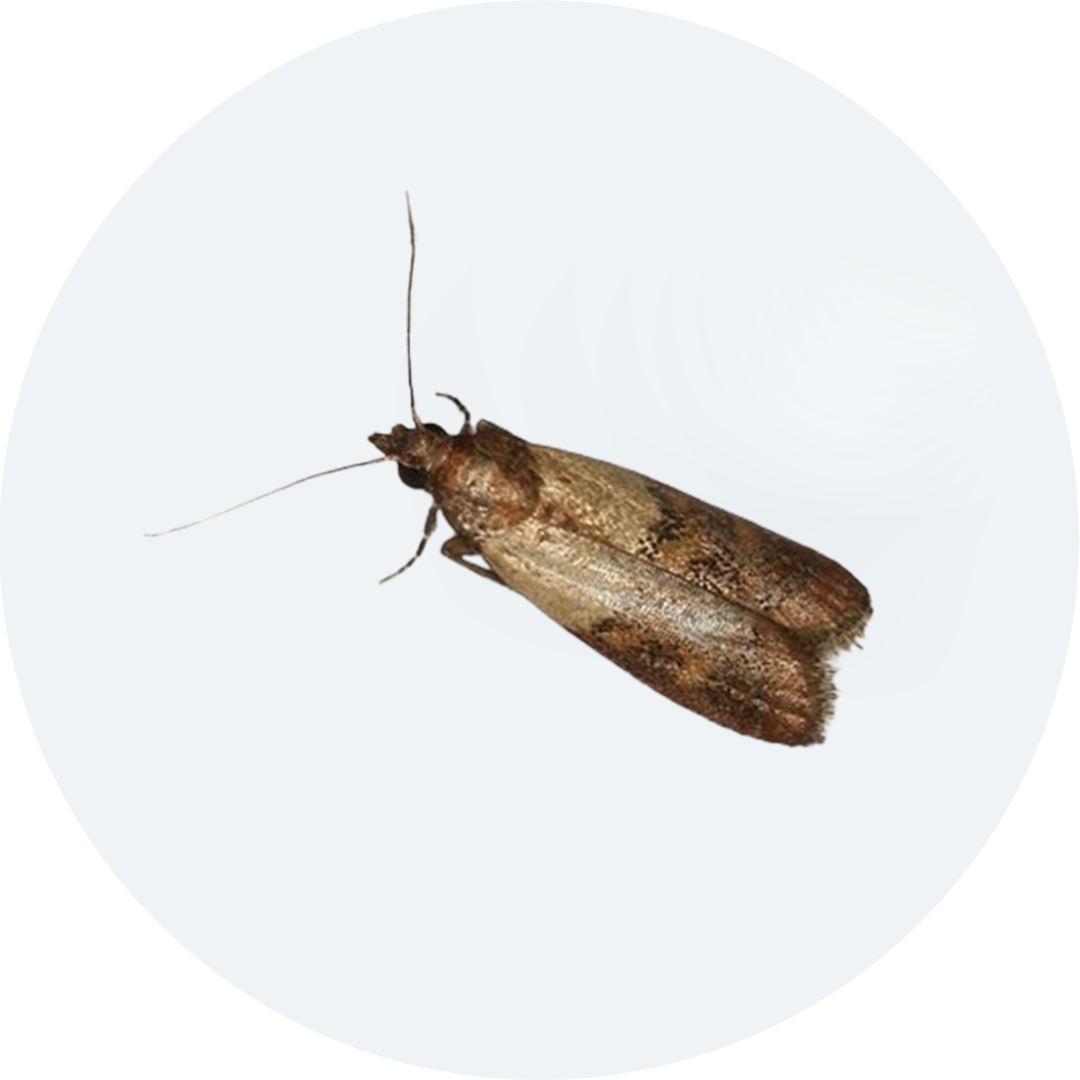
Characteristics: Front wings are bi-colored; the inner 1/3 attached to the body is whitish-gray, and the outer 2/3 is coppery or bronze. The hind wings are pale gray.
- Loosely clinging webbing on the grain is characteristic of this pest.
- Newly hatched larvae are small enough to pass through a sixty-mesh screen.
Legs: 6
Antennae: Yes
Wings: Yes
Habitat: Adult Indianmeal moths are not responsible for damage to stored products, but the larvae cause extensive damage with their feces and webbings. This insect is a troublesome pest of stored grains and can be found feeding on grains, grain products, birdseed, dried fruits, nuts, cereals, and a host of other dry products.
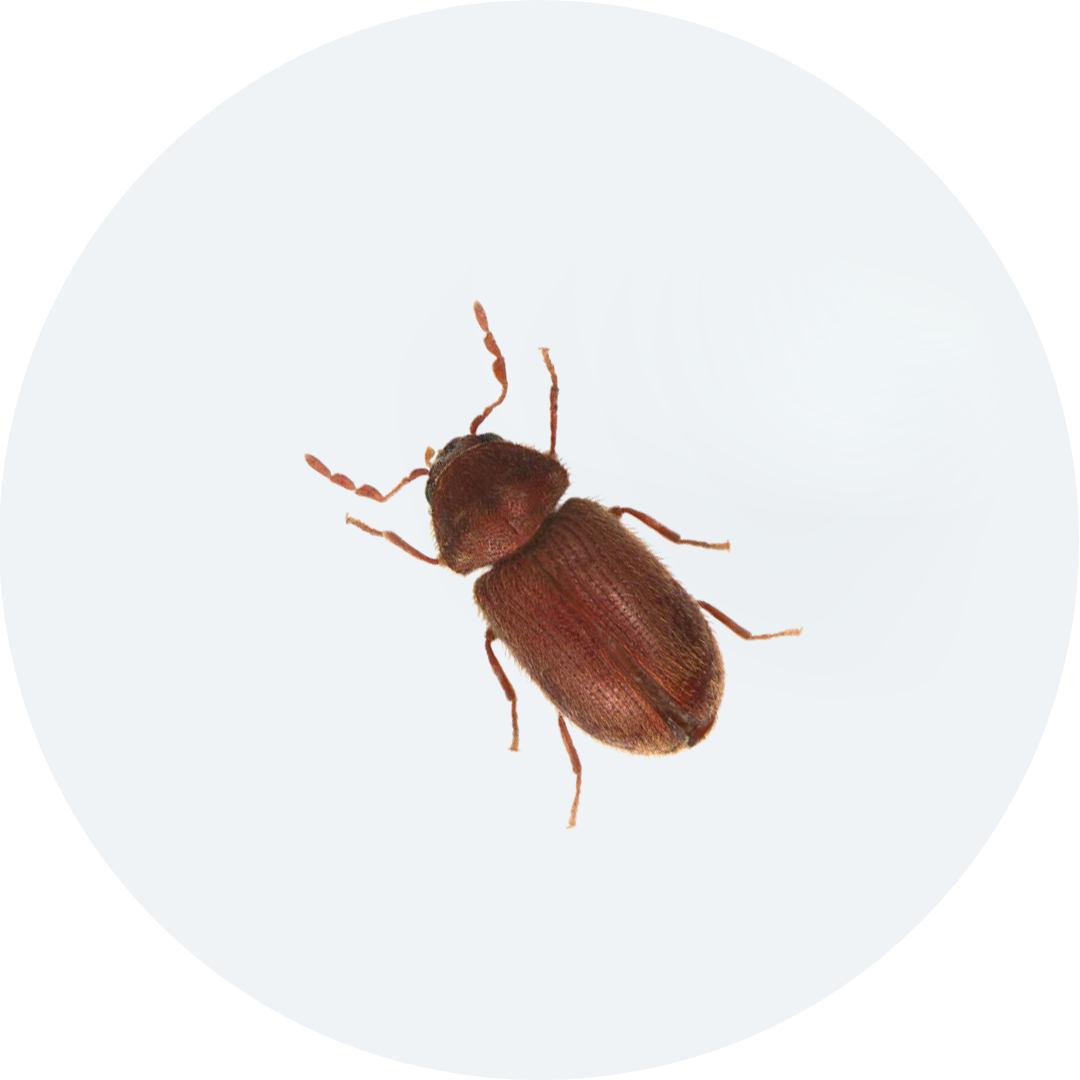
Characteristics: Reddish-brown, Head deflexed (no distinct humpbacked appearance); wing covers have faint lines running lengthwise with antennae having three enlarged segments at the tip.
Legs: 6
Antennae: Yes
Wings: Yes
Habitat: Drugstore beetles feed on many drugs in the pharmacy, such as laxative teas and strychnine. They also infest a host of dry food products. females lay eggs singly in foodstuffs. adult beetle can fly and is attracted to light sources.
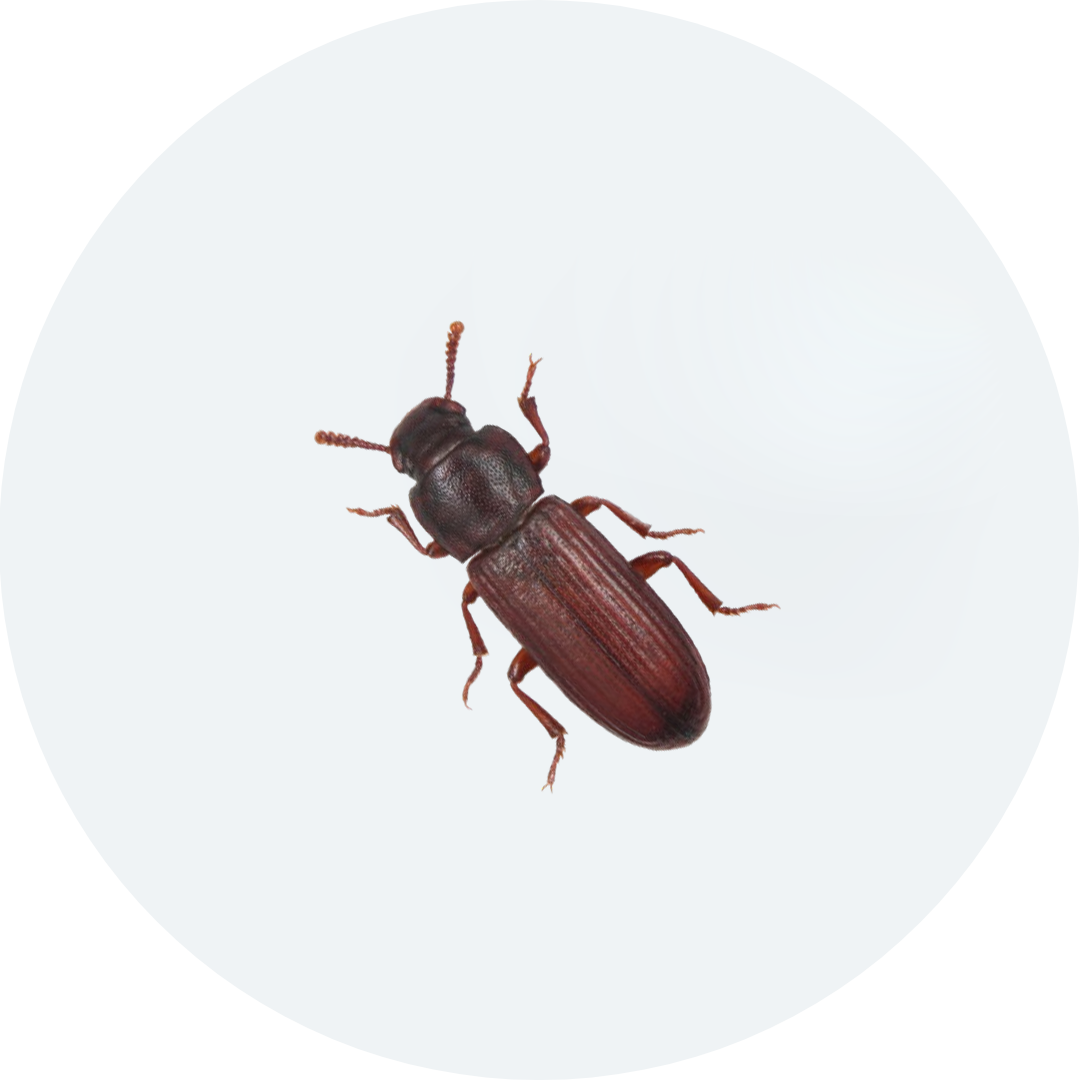
Characteristics: Reddish-brown, antennae segments increase in size gradually from base to tip.
Legs: 6
Antennae: Yes
Wings: Yes
Habitat: Have been found in barley, breakfast cereals, corn meal, crackers, oats, rice, wheat and wheat bran, flours, spices, sunflower seeds, pet foods, birdseed, and a host of other dry products. They don’t fly.
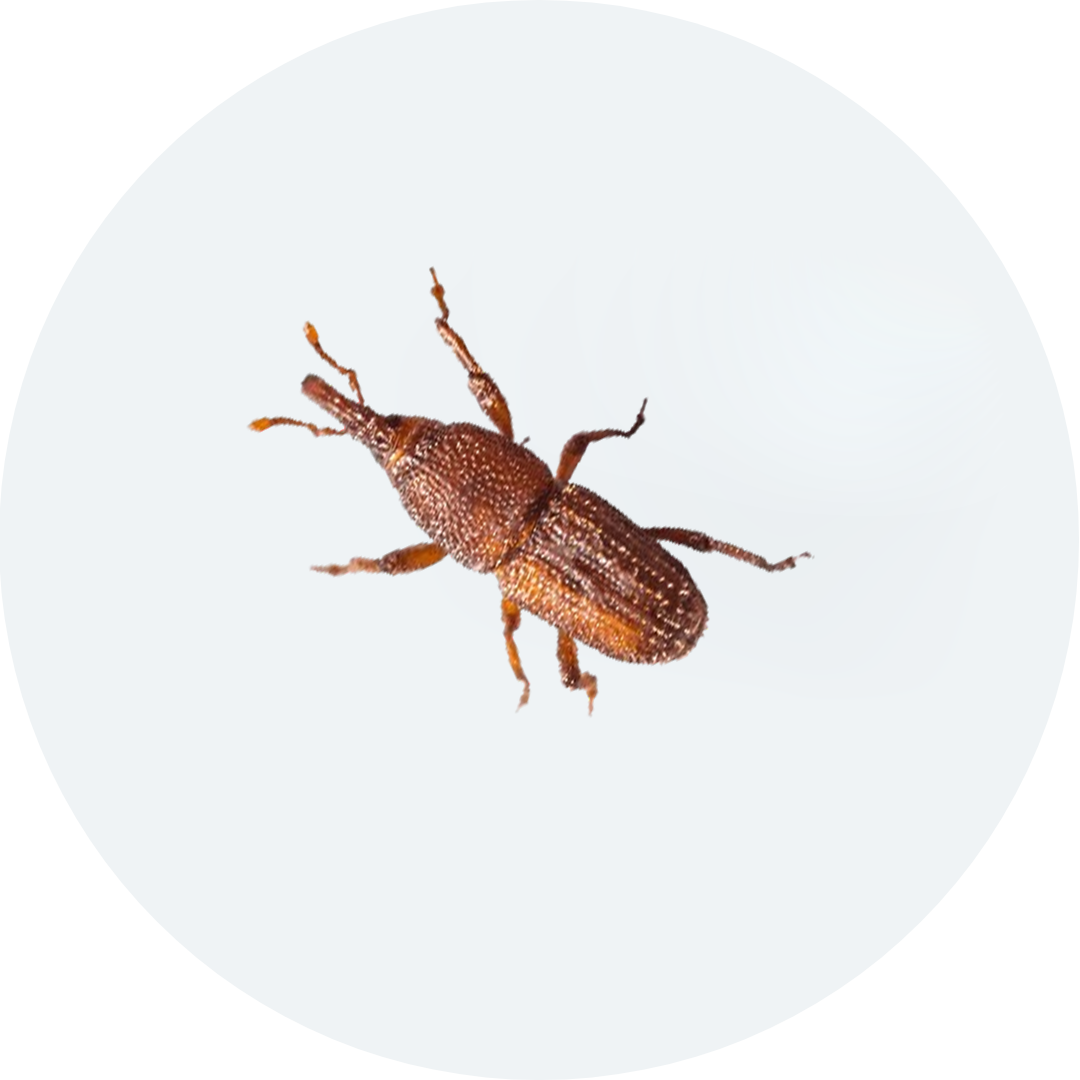
Characteristics: Reddishbrown to black in color with four light yellow or reddish spots on the corners of the elytra (the hard protective forewings). The snout is long (1 mm), almost 1/3 of the total length.
Legs: 6
Antennae: Yes
Wings: Yes
Habitat: Both the adults and larvae feed on whole grains. They attack wheat, corn, oats, rye, barley, sorghum, buckwheat, dried beans, cashew nuts, wild bird seed, and cereal products, especially macaroni. The adult rice weevil can fly and is attracted to lights.
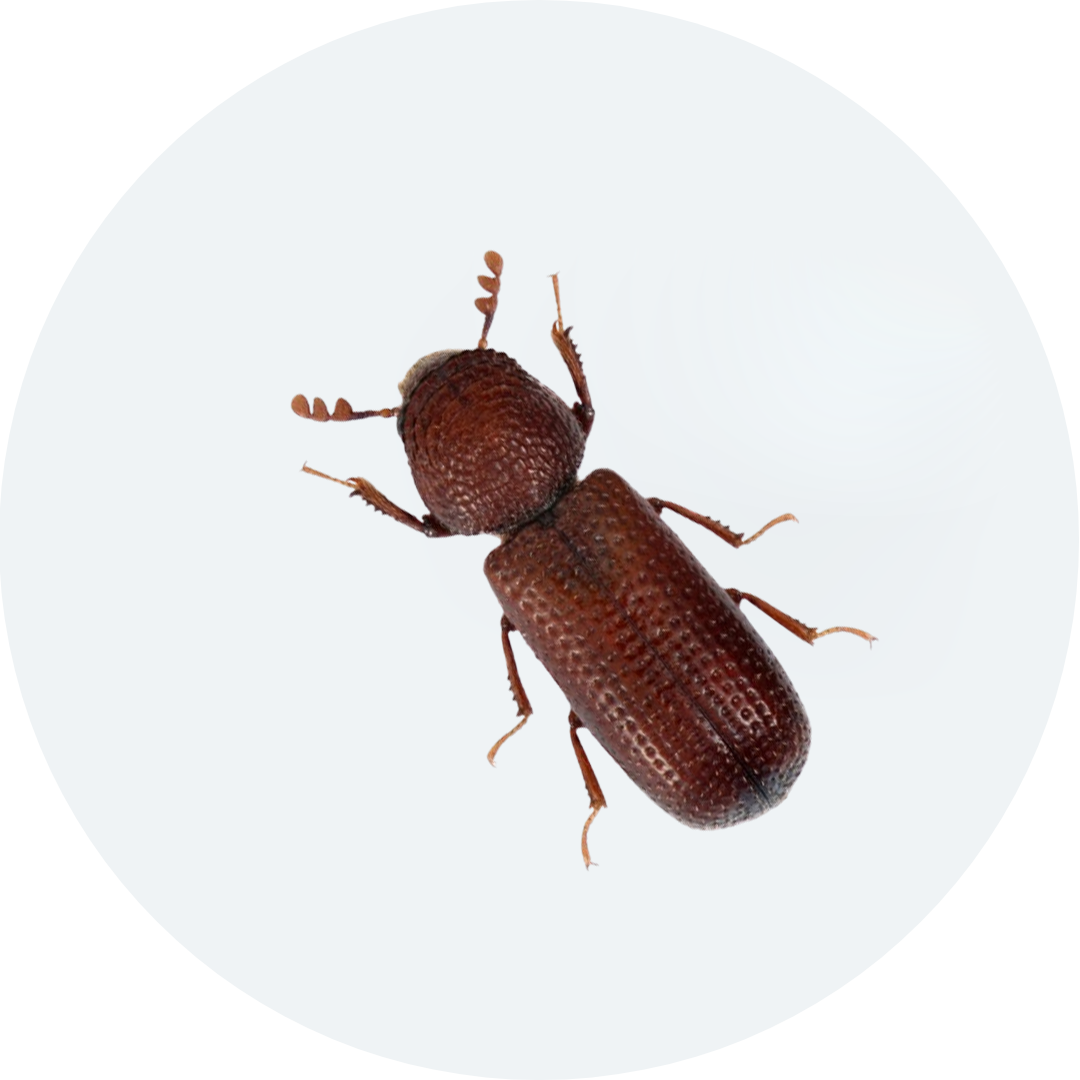
Characteristics: Has a long, cylindrical body that is a dark red-brown/black colour. The head and abdomen feature rows of tiny indentations and the antennae finish with 3 larger segments that form a club.
Legs: 6
Antennae: Yes
Wings: Yes
Habitat:Infestations are typically in grain stores including ships holds, flour mills and animal feed mills. They are associated with a wide variety of vegetable materials including wheat, barley, maize, rice, millet, sorghum, dried potatoes, dried herbs and biscuits. An infestation is characterized by a sweet yet unpleasant, musty smell from excretions and shed skin.


